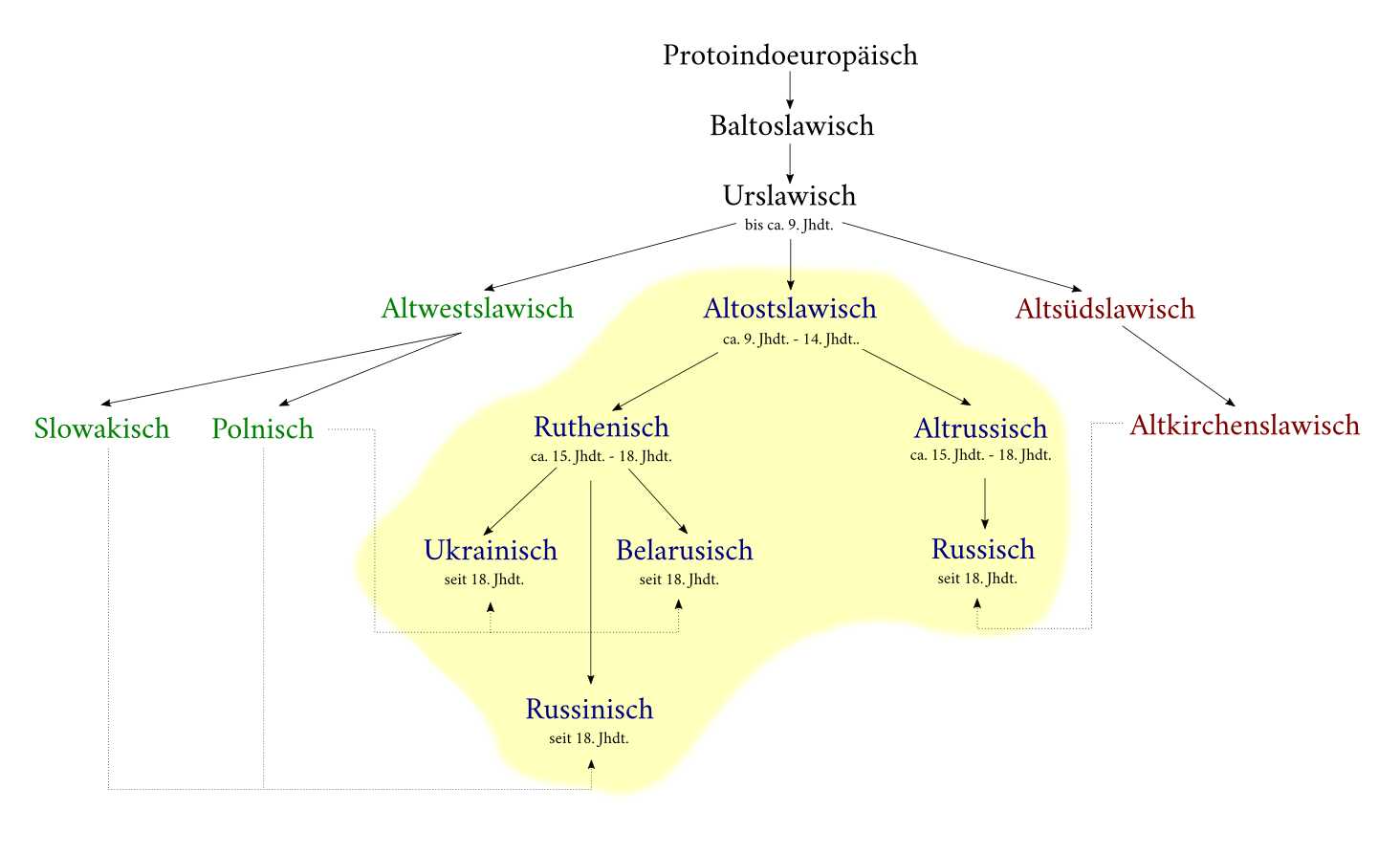46 Ukrainian language
French equals Portuguese? Learn how Ukrainian is closer to Polish than to Russian and how Russia tried to eradicate the Ukrainian language.
- The Ukrainian language differs from Russian and is closer to Polish and Belarusian.
- During history there were multiple attempts of Russia to suppress the Ukrainian language and persecute its speakers.
46.1 Denial of Ukrainian language
It is worth noting that the language issue is often seen as a component of the concept of “brotherly nations”: the two languages are often seen as linguistically close ones, which should allegedly back the theory of Ukrainians and Russians being one nation. See Chapter 1.
For centuries Russia tries to deny the existence of a separate Ukrainian culture and language:
A separate Little Russian language never existed, does not exist, and shall not exist, and the tongue used by commoners (i.e. Ukrainian) is nothing but Russian corrupted by the influence of Poland
Valuev Circular of 1863
However, in fact, Ukrainian and Russian are considered only 62% lexically similar, which corresponds roughly to the gap between French and Portuguese (61%).1 To compare, German and Dutch are 75% similar, although no one claims Dutch to be a dialect of the German language. Actual Ukrainian language differs from Russian and is closer to Polish and Belarusian:
In general, Ukrainian and Belarusian are also closer to other Western European languages, especially to German (via Polish). At the same time Russian was being heavily influenced by Church Slavonic (South Slavic language), but also by the Turkic and Uralic languages.
46.2 Persecution of the Ukrainian language
There is also a considerable reason why until recently Ukrainian has been less popular than it is supposed to be, namely a consistent policy of Russification, which refers to a historical process of cultural, linguistic, and political assimilation imposed by the Russian Empire and later continued by the Soviet Union. In short, it is a 300-year-long record2 of prohibition and suppression of the Ukrainian language in Ukraine under different Russian rulers.
Just one example: the Ukrainian language was effectively banned in the Tsarist Empire for almost three decades from 1876. In the Soviet Union, it was also suppressed for most of this time. Knowledge of Russian was a basic requirement for participation in public life and for professional activity. The fact that many people in Ukraine still speak Russian today is partly a consequence of this policy.3
46.3 See also
The chapters on russian language in Ukraine (Chapter 44), on Russophonia (Chapter 45), on “Great Russian” culture (Chapter 12), on Ukrainan culture (Chapter 13), on warcrimes against Ukrainan culture (Chapter 101).
A Colorful Map Visualizes the Lexical Distances Between Europe’s Languages: 54 Languages Spoken by 670 Million People. (2017, August 28). Open Culture. Retrieved May 2, 2024, from https://www.openculture.com/2017/08/a-colorful-map-visualizes-the-lexical-distances-between-europes-languages.html↩︎
Документи про заборону української мови [Documents banning the Ukrainian language]. (2016, May 10). Rid I Vira. Retrieved May 2, 2024, from https://web.archive.org/web/20160819125540/http:/ridivira.com/uk/buttia-ukraintsiv/397-dokumenty-pro-zaboronu-ukrainskoi-movy↩︎
Christ:2023a↩︎


